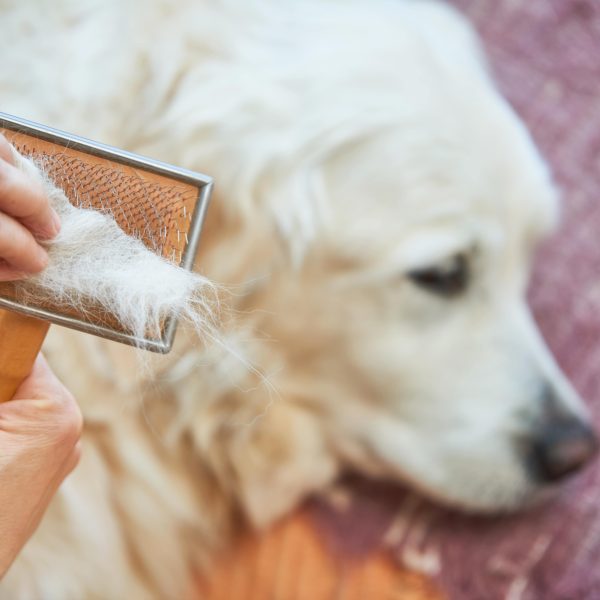What to Know About Alopecia in Dogs

You may have heard about alopecia in humans, but it affects dogs as well. Alopecia is a fairly common hair condition that can cause hair or fur to thin and develop bald patches. Here’s what to know about alopecia in dogs:
What is Alopecia in Dogs?
Not to be confused with excessive shedding, alopecia is a common skin problem in dogs where a dog’s fur might start to thin or develop bald patches. Alopecia can happen to any breed, regardless of gender or age.
Sometimes it displays partial hair loss, but it can also lead to complete hair loss. It may also cause issues with your dog’s skin, as well as their immune, endocrine, and lymphatic systems. It can be rather frightening to see that your dog is losing hair very quickly, especially if they are a dog with a long coat.
What Causes Alopecia in Dogs?
Much like folliculitis in dogs, alopecia can occur thanks to a multitude of different causes. Some of the most common causes of alopecia in dogs are:
- Fungal infections, like yeast infections
- Bacterial infections
- Fleas and ticks
- Allergies that cause your dog to scratch or chew at their skin or excessively lick their paws
- Mange caused by mites
- Hairless breeds
- Vitamin deficiencies
- Certain types of endocrine or hormonal disorders, like Cushing’s disease and hypothyroidism
- Cancer treatments, like chemotherapy
- Trauma
- General aging
There are some dogs who are more susceptible to alopecia. These breeds can include Dachshunds, Italian Greyhounds, Boston Terriers, Boxers, Chihuahuas, Poodles, and Siberian Huskies.
Signs and Symptoms of Alopecia in Dogs
Some dogs excessively shed because of their breed or their dog coat type. However, excessive shedding should be examined if it’s new or unusual, or if you notice any injury to the skin. You may see signs like inflammation of the skin, bleeding, discharge, redness, dark pigmentation, or a foul odor.
You may also notice scaly patches where fur is missing. Your dog may also begin to overgroom themselves. Alopecia and dry skin can also be reasons why your dog is so itchy, and your dog may begin to scratch themselves constantly in response.
How to Diagnose Canine Alopecia
To diagnose alopecia in dogs, your veterinarian may take some skin or hair samples to test for ringworm or other parasites, as well as allergies. If the cause is much deeper, a blood sample might be necessary to look for any other underlying conditions, such as an endocrine or hormonal problem. If your vet is unable to determine the cause of alopecia, you may be referred to a canine dermatologist.
How to Treat Canine Alopecia
Once the cause of alopecia is figured out, treatment can begin. The treatment will depend on the cause of alopecia. Your vet will give you a treatment plan to follow and will probably want to see you for a follow-up visit.
All dogs need to have regular treatments to protect your dog from fleas and ticks, but your vet might recommend something else if that specific treatment isn’t working for your dog. Skin issues that are caused by bacterial or fungal infections will probably require a course of topical or oral medication. It can take between 3-12 weeks before the condition clears up.
If your dog’s alopecia is caused by allergies, it can be a lot harder to treat until the underlying allergy can be resolved. If the cause is due to a hormone or endocrine issue, your dog may need long-term treatment.
This is an overview of what to know about alopecia in dogs. If you suspect that your dog might have alopecia, make sure you talk to your veterinarian as soon as possible. The sooner you can get diagnosed, the sooner your dog can be treated and back to feeling healthy and happy.
